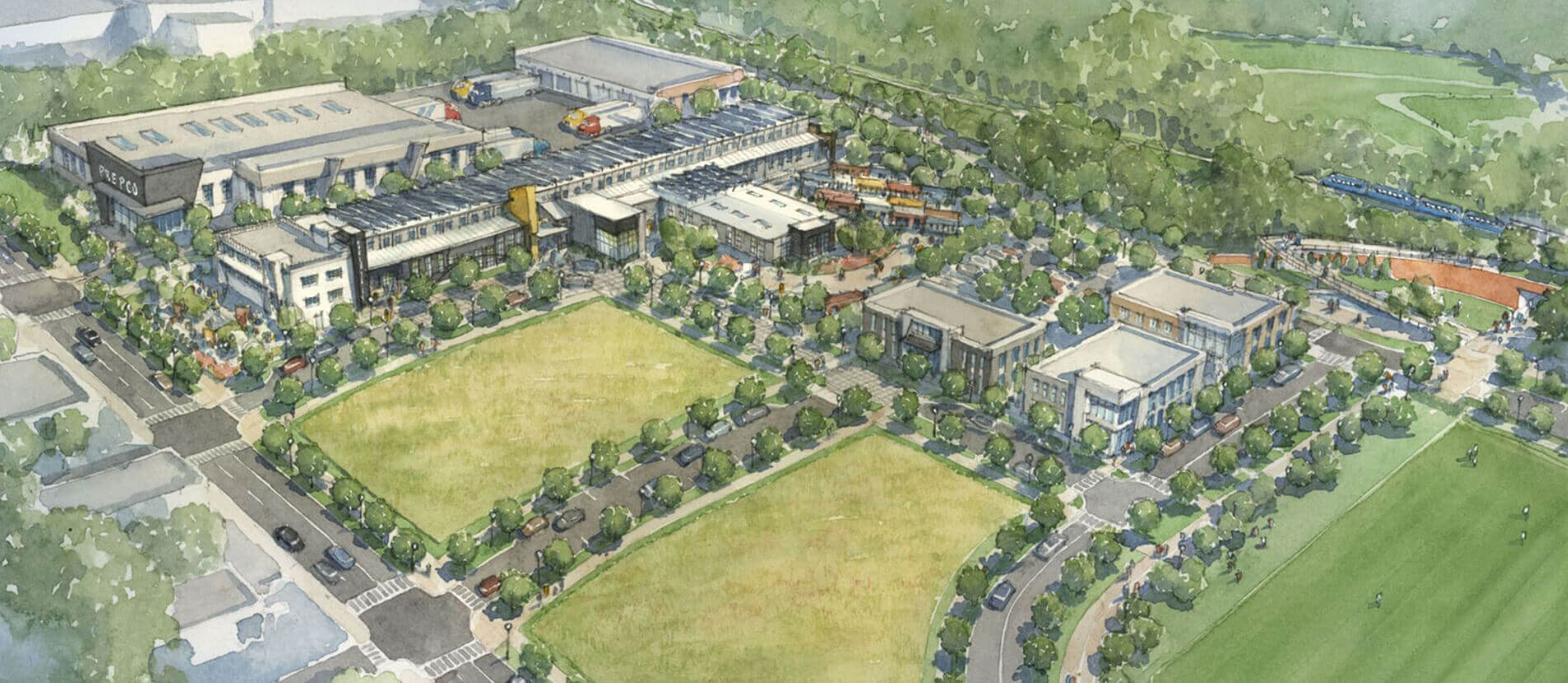HISTORY INSPIRES TODAY’S MISSION.
Pittsburgh Yards® and the neighborhoods that surround it have a rich history and a vibrant future.
Site purchased by the Freedman’s Aid Society.
Pittsburgh neighborhood is founded by formerly enslaved people with housing built around Pegram railroad repair shops. The smoke from the rail yards resembled the heavy smog produced by the steel mills of Pittsburgh, Pennsylvania, resulting in the neighborhood’s name.
The Board of Education for Negroes of the Methodist Episcopal Church (formerly known as the Freedman’s Aid Society) sold a portion of their land to the Atlanta and West Point Railroad to allow for the construction of a beltline spur south of University Avenue.
Carrie Steele Logan, a formerly enslaved person and maid on the railroads, used money from the sale of her autobiography to open the first black orphanage in Georgia, the Carrie Steele-Pitts Home, which was located in Pittsburgh until 1963 at the corner of Roy and Windsor streets.
Black-owned businesses on McDaniel Street flourished.
Site was used for farmland by Clark College’s agricultural department
The Pittsburgh School, the neighborhood’s first school, opens in the basement of the Ariel Bowen United Methodist Church.
Capitol View Manor neighborhood was formed when a group of bankers, led by Joseph E. Boston, purchased a tract of land to be subdivided into residential development.
The former Pittsburgh School became the W.H. Crogman School when Clark Atlanta University donated land for the construction of a new building.
Great Southern Trucking Terminal, the world’s second largest at the time, opened.
The first Georgia Roadeos, a festival and truck-safety content sponsored by the Georgia Motor Trucking Association, were held at the site. The winner would go to the American Trucking Association’s National Roadeo in Chicago.
Ryder Systems, Inc. acquired the site for continued trucking uses.
The massive terminal served as a fallout shelter for potential nuclear war.
Brown Transport Company became the owner of the property until bankruptcy in 1990s.
A recession hit and the terminal was dealt an economic blow.
Only one tenant remained in the trucking terminal.
The University Avenue site is purchased by UPS for a planned distribution center.
UPS sold the land to AECF Atlanta Realty, a subsidiary of the Annie E. Casey Foundation.
The City of Atlanta was given access to operate municipal sewer separation work for two years.
Community engagement began, including Community Economic Development Institute, followed by Study Circles.
Another recession hit, and the project is put on hold to shift focus to the neighborhood’s housing crisis.
Obsolete structures were demolished.
Several environmental assessments and tests were conducted and completed through 2013.
Market study conducted, community-designed public art project installed, and multiple community events held on the site through 2017.
After a Request for Qualifications from developers, followed by a Request for Proposals, Columbia Core Partners were selected to assist with project development.
Predevelopment for Phase I commenced, including surveying, engineering, architectural and financing.
The Atlanta BeltLine opened.
Monthly community update meetings began and volunteer resident working groups were formed.
Residents and the community cast more than 300 votes to name the project: Pittsburgh Yards.
Southside Trail—a connector of the Atlanta BeltLine—acquired by the City, with a future access point planned at Pittsburgh Yards.
Pittsburgh Yards community groundbreaking ceremony celebrated the history and culture of the area.
Phase I construction began, and community members selected the project branding, developed the ground leasing criteria and designed guidelines for the green space.
Construction Ready training launched in the community.
Community members named various components of the site and planned for a community farmers market. Some community members were hired for construction work.
Phase 1 of Pittsburgh Yards opened in late 2020.
The Nia Building® opened to the public.
The first Community Celebration was held in September.
Ribbon-cutting was held at Pittsburgh Yards for the first segment of the Atlanta BeltLine Southside Trail.
Expansion of the Southside Trail announced, with Pittsburgh Yards set as the start of the Segment 2 trail.
Shipping Container Courtyard plans continued.
The community green space began hosting regular recreational activities and events.



